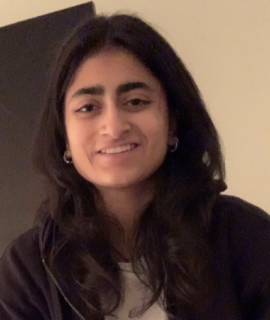Title : Challenges on working with a glioblastoma patient- A case study
Abstract:
Background Glioblastoma multiforme (GBM) is the most malignant and pervasive glioma subtype, representing the most common primary brain tumor in adults. Despite its rarity, with a global incidence of fewer than 10 per 100,000 people, GBM has a poor prognosis, with a survival rate of just 14-15 months post-diagnosis. This case study examines a patient's medical journey, initially diagnosed with grade 2 astrocytoma in 2016, which recurred as grade 4 astrocytoma (GBM) in 2022.
Case History Following the diagnosis of grade 2 astrocytoma in 2016, the patient underwent surgery and radiotherapy, stabilizing and returning to normal activities within a month. For seizure control, the patient was maintained on Tegrital and Frisium. However, in March 2022, the tumor recurred as GBM, necessitating a second surgery, six weeks of radiotherapy, and a year-long course of higher-dose oral chemotherapy. The patient remained stable until mid-2023, when significant neurological decline began, including impaired motor function, cognitive deterioration, vision problems, and loss of interest in daily activities. By August 2023, severe mobility issues, communication difficulties, frequent vomiting, disturbed sleep, and cognitive decline were evident. In September 2023, Tibetan medicine was introduced as an alternative treatment, alongside physiotherapy and dietary adjustments to a vegetarian diet supplemented with vitamins.
Method Our team proposed various alternative therapies, such as CBD oil, fasting, hydrogen inhalation therapy, ozone inhalation, photodynamic therapy, sound therapy, meditation, yoga, reiki, pranayama, recall healing, and family constellations and many more. Research by our clinician on the latest GBM treatment methods, sourced from PubMed, JAMA, NEJM, and other relevant sources, was conducted for over a year. When our alternative therapies team member joined the project, additional research was done on methods supporting allopathic treatments. The documents compiled research was presented to the patient and family through constant communication, including phone conversations, house visits, and meetings, emphasizing the importance of building a connection. As allopathic treatment options were exhausted, the family started considering alternative approaches.
Results High stress levels within the patient’s family made it challenging to communicate and integrate the extensive information provided by our team. The year and a half-long research indicated potential benefits of alternative therapies in improving chemotherapy's secondary effects, strengthening the immune system, and enhancing overall well-being. The potential connection between emotional states and disease progression was acknowledged by the family but not deeply explored. Overall, the family showed reluctance towards the alternative therapies presented.
Conclusion This case underscores the need for robust evidence supporting the combination of alternative treatments with allopathic medicine for sustaining patients with GBM. However, more research and practical experience are necessary. Additionally, building a trusting relationship with patients and their caregivers is essential for effective communication and support. This connection helps patients and caregivers feel heard and secure, facilitating the integration of comprehensive treatment plans.
Audience Take Away:
- They will be able to learn about alternative therapies for GBM and learn from our experience
- The audience could learn from our experience to work with patients and families
- It is, as they could learn about alternative therapies for GBM and learn about the challenges of working with patients and families
- We provide some solutions in how to work with patients and families based on our experience
- It could aid in better designing the collection of scientific evidence for alternative therapies and enhancing collaboration with patients and their families.
- New information on alternative therapies
- Improving working with patients and families
- Better dissemination of scientific knowledge



